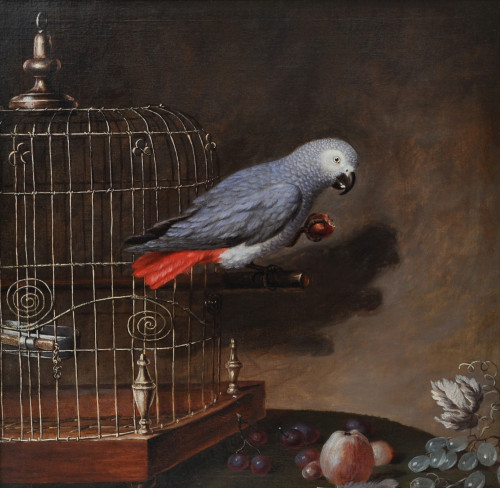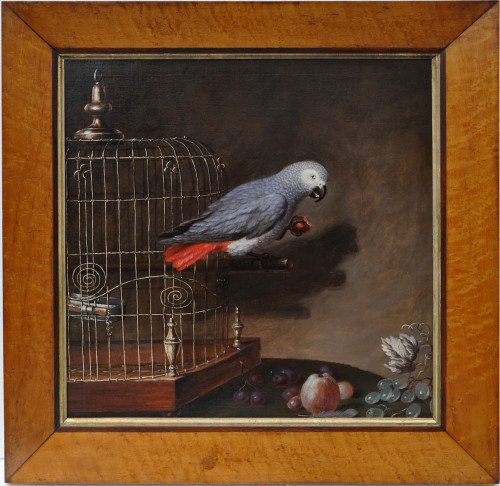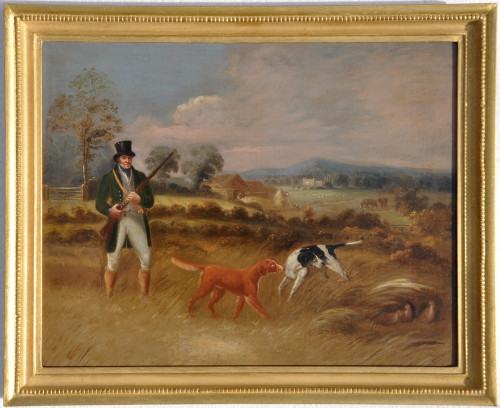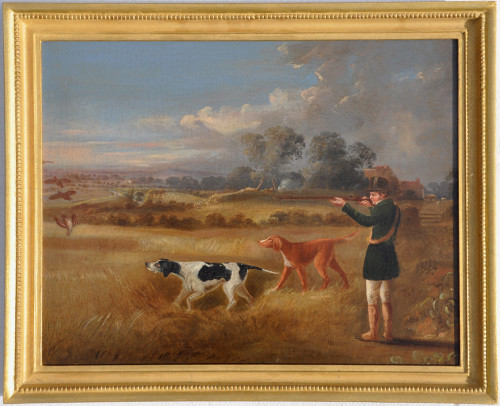Portrait of a Hunter, held by a liveried Groom, with the Rider and his Dog standing close by
Portrait of a Hunter, held by a liveried Groom, with the Rider and his Dog standing close by
JOHN WALSHAM
Circa 1750
English School
Portrait of a Hunter, held by a liveried Groom, with the Rider and his Dog standing close by
Oil on canvas, signed
64 x 103 cms
25¼ x 401/2 ins
Overall framed size 73 x 112 cms
28 ¾ x 44 ins
John Wootton, 1678? - 1764, is regarded as the first English painter to specialise in horse portraiture and he became the equestrian painter of choice to the aristocracy. He was influenced by the Dutch painter Jan Wyck who had come to England with his father Thomas in the early 1670s to ply his trade. Both of the Wycks were important in the evolution of horse painting in England as Jan paid particular attention to their portrayal in his battle and hunting scenes and mounted portraits of military figures.
Wootton saw these works and although his hunting scenes were more naturalistic in the continental taste - probably also as a result of his friendship with the Flemish painter Pieter Tillemans - in his horse portraiture he imbued the works with an English sensibility which manifested itself as a more naïve style.
James Seymour, circa 1702 - 1752, was the next major horse painter to emerge in England. His father had been a banker and diamond merchant as well as a picture dealer and amateur artist. Seymour Jnr came across the works of Wootton and Tillemans through his father. Seymour had started to draw at an early age, developing his own style which although retaining the naivity of Wootton, his paintings are more precise and beautifully refined.
James Seymour loved racing and through this and being socially well-connected, he became renowned and his style was in some ways a template for others to strive for, spawning a whole group of followers in the mid eighteenth century. Some worked very closely in his style while others were a blend of his and that of Francis Sartorius. Thomas
Spencer is probably the best known of the Seymour circle and they worked together on horse portraiture to be made into prints. Some critics regard Spencer as superior to that of Seymour but he is not as famous. Others included Francis Stringer, William Shaw, Richard Roper, Daniel Quigley, Thomas Burford and Thomas Butler. John Walsham can now be included in this circle. He is not recorded but he was almost certainly a provincial painter who earned his keep painting commissions closely in the style of the popular Seymour and gaining employment by referral from one country house to another. It is possible that signed other works by him have had their signatures removed many years ago and replaced by that of Seymour.
Walsham has captured the naïve charm typical of Seymour but the technique is less precise although the rolling landscape is redolent of both Spencer and Seymour.
1740 - 1770
Oil on canvas
England
RELATED ITEMS






















